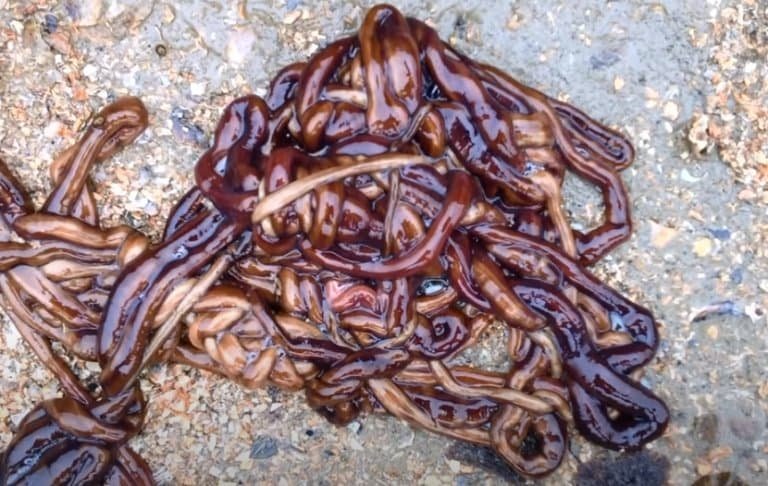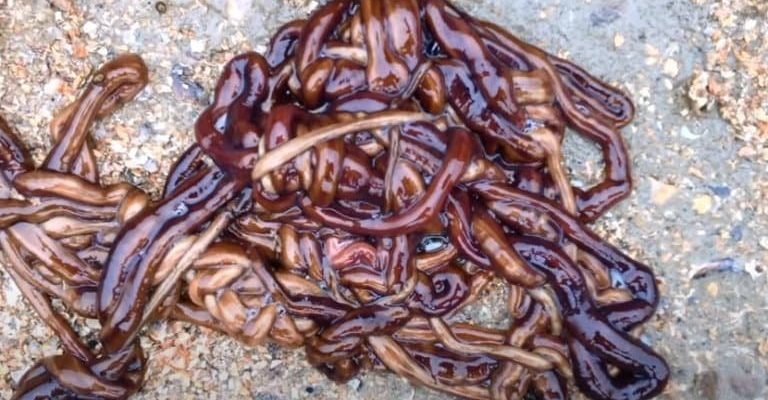
Bootlace worms, also known as *Lineus longissimus*, are known for their stunning length and unusual anatomy. These worms are often found in coastal waters where they like to hide among rocks and seaweed, but they sometimes venture into the world of mussel beds. You might think of them as the long, ribbon-like relatives of more familiar marine worms. Their interactions with mussels can be quite intriguing, and there’s a lot to uncover about this relationship.
In this article, we’ll dive into the ways bootlace worms interact with mussel beds, how they rely on these environments, and what this means for the larger ecosystem. We’ll look at their feeding habits, habitat preferences, and the overall importance of this relationship.
Understanding Bootlace Worms
Bootlace worms are remarkable creatures. Honestly, if you’ve never seen one, you might be surprised by their appearance. These worms can grow up to 55 meters long, making them one of the longest animals on Earth! With their slim, flexible bodies, they can move gracefully through the water and across the sea floor.
You might be wondering how they survive in their watery world. Bootlace worms are predators, feeding primarily on small invertebrates. They have a unique way of hunting: they secrete a toxic substance that paralyzes their prey. This method makes it easier for them to capture food without expending too much energy.
Their habitat preferences lean toward areas where there’s plenty of food and shelter. This is why they flock to mussel beds. These beds offer not only a source of food but also protection from larger predators. It’s a cozy environment for these long, elusive worms.
The Role of Mussel Beds in Marine Ecosystems
Mussel beds are like bustling cities for marine life. They provide a home for many species, including fish, crabs, and, of course, bootlace worms. Mussels themselves are filter feeders, which means they play a crucial role in maintaining water quality. They filter water, removing harmful particles and improving environmental health.
These beds are not just homes for mussels; they create habitats. The shells of dead mussels become surfaces where other organisms can thrive. This makes mussel beds hotspots for biodiversity, helping to support not just the local fish population, but also worms and other marine creatures.
You might not realize it, but mussel beds also help stabilize coastlines. They can reduce erosion by absorbing wave energy, making them vital for maintaining the shore’s integrity. This stability supports an entire ecosystem, allowing creatures like bootlace worms to flourish.
Interactions Between Bootlace Worms and Mussel Beds
So, how do bootlace worms and mussel beds interact? The relationship is primarily one of habitat and hunting grounds. When bootlace worms decide to take up residence in a mussel bed, they benefit from the abundance of food sources. Small invertebrates that thrive in these areas become easy meals.
On the flip side, mussels might experience both benefits and drawbacks from hosting these worms. While the worms can help control the populations of small organisms that would compete with mussels for resources, their presence can also pose a potential threat. If bootlace worms become too numerous, they might overfeed and deplete the food supply.
You could say it’s a balancing act—one that showcases the delicate nature of marine ecosystems. The interactions between bootlace worms and mussels highlight how interconnected life is in the ocean. Every creature plays a role, and when one changes, the effects ripple through the community.
Feeding Habits of Bootlace Worms
Bootlace worms have a fascinating feeding strategy. As predators, they primarily consume small invertebrates. Their long bodies allow them to reach into tight spaces, making them effective hunters even in the densely packed environments like mussel beds.
When they find their food, they use their unique toxin to paralyze prey, such as small fish or crustaceans. This method not only makes hunting easier but also ensures that they can consume a variety of food types without a lot of effort.
The presence of bootlace worms in mussel beds can lead to a dynamic food web. As they feed, they help maintain the balance of life in the mussel bed. However, if their numbers grow too high, they could threaten the local food supply, impacting both the mussels and other organisms in the area.
Understanding how these worms feed is crucial. It shows us how significant they are in regulating food chains in marine habitats. After all, every creature has its role to play in the ecosystem.
Environmental Importance of Bootlace Worms and Mussel Beds
The interactions between bootlace worms and mussel beds are essential for environmental health. These worms contribute to the overall diversity and resilience of coastal ecosystems. When they thrive in mussel beds, they promote a rich tapestry of life.
Bootlace worms also help recycle nutrients in the ecosystem. As they feed and reproduce, they contribute organic materials back into their environment, enriching the sea floor. This nutrient cycling supports various marine plants and animals, which in turn helps maintain a balanced ecosystem.
Moreover, healthy mussel beds can provide a natural barrier against environmental changes like erosion and climate change. By stabilizing shorelines, they create a safe haven for bootlace worms and other creatures. This relationship is a reminder of the complex interdependencies we often overlook in nature.
By studying these interactions further, scientists can gain insights into marine health and the impacts of human activity on these delicate ecosystems.
Understanding how bootlace worms interact with mussel beds reveals a beautiful complexity of marine life. These creatures, often overlooked due to their elusive nature, play essential roles in supporting the health and balance of coastal ecosystems. In many ways, the relationship is a dance—a balance between feeding, habitat, and environmental health.
As we continue to explore and learn about these fascinating interactions, we can better appreciate the intricate web of life beneath the waves. Every organism has its place, and every action can have far-reaching consequences. So, next time you’re walking along the beach and see those mussel beds, remember there’s more to the story than meets the eye. The bootlace worms are out there, quietly weaving their part into the tapestry of marine life.

